
5 things to consider if you’re switching your CFD broker in 2026
SPONSORED: Not happy with your current CFD trading service? We take a look at some of the key considerations when you’re switching to a new one

5 things to consider if you’re switching your CFD broker in 2026
SPONSORED: Not happy with your current CFD trading service? We take a look at some of the key considerations when you’re switching to a new one

Boxing Day mania: Aussies set to spend $3.1 billion on sales
Boxing Day is set to drive a surge in shopping, according to new research by Finder.

Sleighing the budget: Australians plan to splurge $37 billion this festive season
Australians are expected to loosen the purse strings this silly season, according to new research by Finder.

SPONSORED: With the new year just around the corner, it’s the perfect time to look at upgrading your home internet connection with Superloop.

SPONSORED: Selecting a new home internet plan doesn't have to be a hassle. But there are some essential things to know first.

What to know about getting a fixed rate after Westpac hikes again
Several banks have increased their fixed home loan interest rates recently, with Westpac doing so twice. As a borrower, your rate isn't locked in until the loan settles. So what do you do?

Christmas shopping car crash: How to avoid this HUGE insurance risk
Low-speed collisions, high holiday stress. We’ve officially entered the Christmas chaos period.

SPONSORED: The One Plan from Exetel is designed to provide straightforward home internet, with no frills and none of the hassle!

SPONSORED: Did you know that referring friends through Exetel can save you cash on your own internet bill? We look at how it works!

SPONSORED: Gemini has launched in Australia! So here's what you need to know about crypto trading and investing on the Gemini platform.

Experts are divided on what the RBA might do next year, as inflation crept up over the last few months of 2025.
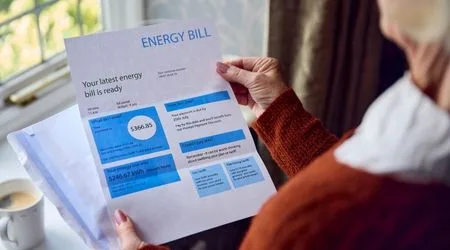
An end to energy rip offs? New rules to make power bills simpler and cheaper
These changes could finally spare Aussies the loyalty tax.

Sweating the bills: 71% of Aussies take action to save on electricity costs this summer
From switching off the lights to taking cold showers, millions of Australians are tightening their energy usage to get ahead of soaring summer power bills, according to new research by Finder.

5 factors to consider if you switch super funds before the end of 2025
SPONSORED: With the end of the year approaching, it's time to check whether you're on Santa's Naughty or Nice list for your superannuation!

Finder’s RBA Survey: Experts divided on cash rate trajectory for 2026
The RBA has held the cash rate at its final meeting of 2025, dashing hopes of any Christmas reprieve for borrowers.

If you're trying to save money (perhaps for a house deposit), the RBA keeping the cash rate on hold is good news. Here's why.
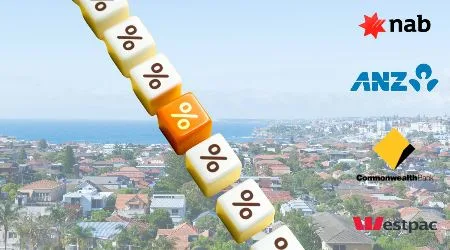
No RBA rate cut, but do banks react anyway? Here’s what to know
The RBA has held the cash rate for the final meeting of 2025 as it responds to inflation.

No more energy rebates in 2026: How can you save on power bills now?
No more energy bill relief in the new year.
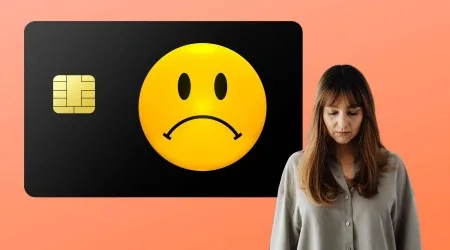
Credit card companies are cutting back on the most lucrative offers, but a good credit card still offers a ton of value.

Aussies are dumping gold-tier health insurance as premiums continue to soar
In a recent report, the Australian Medical Association (AMA) noted that between 2008 and 2024, health insurance premiums had more than doubled in cost, prompting 360,000 Aussies to ditch cover since the start of the COVID-19 pandemic back in March 2020.

SPONSORED: The new year's approaching fast. So why not upgrade to a 5G plan with EZEE Mobile for an affordable price?

The huge rise in stupid drivers: What it means for your car insurance
Recent Finder research has found that 4 in 5 Australians have seen risky road behaviour from other drivers.
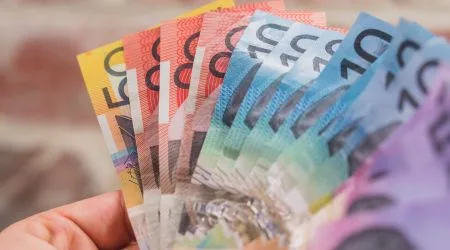
Finder’s RBA Survey: Experts reveal where Aussies can save the most
Ahead of tomorrow’s cash rate call, the nation’s economists have revealed where households can find the biggest savings.

Barking mad: Aussies expected to spend over $1 billion on their pets this Christmas
New data from PetO has revealed exactly how much we love our pets, with Aussies expected to drop more than $1 billion on their furry friends this Christmas.

Finder’s RBA Survey: The RBA will be “the Grinch that stole Christmas” this year
Homeowners hoping for a Christmas miracle will be left disappointed, with economists agreeing Santa won't be delivering rate relief this year.

ANZ, Amex, Kogan: The 5 best credit cards on the market right now
Here are the 5 highest-rated credit cards on the market right now, whether you want a balance transfer deal, points or no annual fee.

Australia heatwave shocker: How your air con could blow your energy bill
Know what to expect so your summer energy bill doesn’t come as a shock.

SPONSORED: Thinking about switching internet providers? Check out the latest offer from Belong.

5 things you can do to plan for retirement now – even if it’s still a while away
SPONSORED: It's never to early to start preparing for retirement. We take a look at some simple steps you can take now with Vanguard!

SPONSORED: If your business is growing rapidly, you need the right support. These tips from Tyro show you the essentials.

5 savings accounts with high bonus interest offers right now
Gift yourself more interest in December with one of these top savings accounts.

Will saying you’re non-binary get you cheaper car insurance? Here’s the truth
A story has gone viral of a man who discovered identifying as non-binary got him a cheaper car insurance quote.

New Qantas Points Planes rewards flights: Which ones are actually worth taking?
Get in quick for Business flights to Europe - they'll go fast.

Paris is out, Phuket is in: the new travel trend Aussies are dropping $10k on
According to a recent report from Wendy Wu Tours, Aussies are forgoing Europe for Asia in an attempt to save money, while still enjoying a well deserved break.

Lonely schooners: 1 in 3 Aussies have stopped shouting rounds at the pub
The Aussie tradition of 'shouting a round' is falling out of favour as it's becoming too expensive, according to new research by Finder.

Help to Buy: Government’s 2% deposit scheme start date announced
The federal government's Help to Buy Scheme has finally been given a start date, more than a year after it was approved in Senate.

How to make sure you don’t waste your health insurance this year
Many leading health insurers reset their annual extras limits on January 1, giving Australians less than 90 days to take full advantage of their private health insurance benefits.

Crypto.com's Level Up Program is offering a variety of benefits to members and making spending crypto more accessible.

SPONSORED: With crypto at the cutting edge of finance, we look at some of the most exciting developments.

SPONSORED: Card rewards, institutional backing and stablecoins are heading up future crypto industry innovations.

Apple One now free with new iPhones: What is it and is it worth it?
You won’t pay anything for Apple One for the first three months.

Sinking in personal debts? Our experts show you how to climb out
A recent investigation showed that a concerning number of borrowers were defaulting on car loans within the first 6 months. Struggling with debt is scary, but there are steps you can take for better management or support.

SPONSORED: In a crowded marketplace, it's important to have a careful eye when assessing cryptocurrencies for investment.

Fake stores, social media “bargains” and pressure tactics: beware Black Friday scams
Black Friday sales have become one of the biggest sales events of the year, which means it's a peak time for scammers to take advantage.

SPONSORED: With Crypto.com, you can gain access to a crypto-based card solution – as well as the opportunity for a range of rewards.

Black Friday: 0% interest for 6 months with David Jones credit cards
SPONSORED: Looking for shopping rewards? The David Jones Premiere and Prestige credit cards may offer the perks you're after.

Borrowers have been taking out loans too high compared to their income, and now APRA is cracking down.

Best Black Friday mobile plan deals: 50% off + bonus data offers
The clock's ticking on these Black Friday offers.

SPONSORED: Bitcoin has dipped below 100K. Should crypto and CFD traders be concerned? Or is there still potential in the market?

Re-giftmas: Aussies passed on $1.3 billion worth of presents from last Christmas
Australians are wasting a staggering amount on presents that miss the mark, according to new research by Finder.
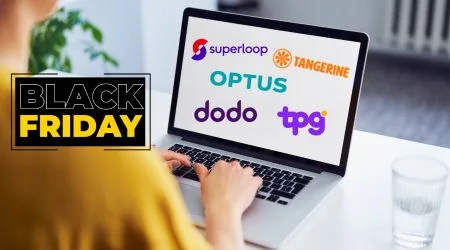
Best Black Friday NBN and home internet deals: Up to $240 off + bonus gift cards
The clock is ticking on this year’s Black Friday internet offers.

Picky about produce: 86% of Australians still prefer to do their grocery shopping in store
Online shopping has become the norm for many Australians, but when it comes to groceries, the majority are a picky bunch, according to new research by Finder.

Samsung phone users urged to verify they can dial triple zero – here’s how
Don't leave this to the last minute.

ASIC has conducted a review into the car loans industry and found dodgy sales tactics from third party distribution channels as well as poor customer support.

Going broke for a break: 10 million Australians take drastic action to afford a holiday
Aussies long overdue for a break are stopping at nothing to get away, according to new research by Finder, Australia’s most visited comparison site.
Find a better deal, save on your bills and get a free gift card. Sign up to be the first to hear about new Finder Rewards.
Finder makes money from featured partners, but editorial opinions are our own.
Finder is one of Australia's leading comparison websites. We are committed to our readers and stand by our editorial principles.
We try to take an open and transparent approach and provide a broad-based comparison service. However, you should be aware that while we are an independently owned service, our comparison service does not include all providers or all products available in the market.
Some product issuers may provide products or offer services through multiple brands, associated companies or different labeling arrangements. This can make it difficult for consumers to compare alternatives or identify the companies behind the products. However, we aim to provide information to enable consumers to understand these issues.
We make money by featuring products on our site. Compensation received from the providers featured on our site can influence which products we write about as well as where and how products appear on our page, but the order or placement of these products does not influence our assessment or opinions of them, nor is it an endorsement or recommendation for them.
Products marked as 'Top Pick', 'Promoted' or 'Advertisement' are prominently displayed either as a result of a commercial advertising arrangement or to highlight a particular product, provider or feature. Finder may receive remuneration from the Provider if you click on the related link, purchase or enquire about the product. Finder's decision to show a 'promoted' product is neither a recommendation that the product is appropriate for you nor an indication that the product is the best in its category. We encourage you to use the tools and information we provide to compare your options.
Where our site links to particular products or displays 'Go to site' buttons, we may receive a commission, referral fee or payment when you click on those buttons or apply for a product.
When products are grouped in a table or list, the order in which they are initially sorted may be influenced by a range of factors including price, fees and discounts; commercial partnerships; product features; and brand popularity. We provide tools so you can sort and filter these lists to highlight features that matter to you.
Please read our website terms of use and privacy policy for more information about our services and our approach to privacy.
We update our data regularly, but information can change between updates. Confirm details with the provider you're interested in before making a decision.
How likely would you be to recommend Finder to a friend or colleague?
Our goal is to create the best possible product, and your thoughts, ideas and suggestions play a major role in helping us identify opportunities to improve.
Need help? Contact Support